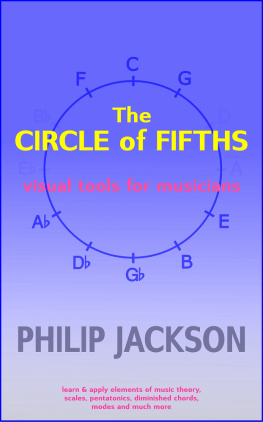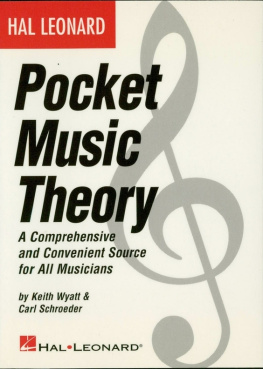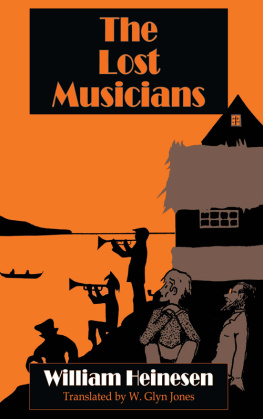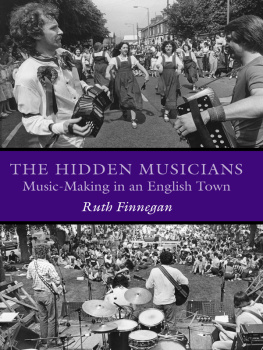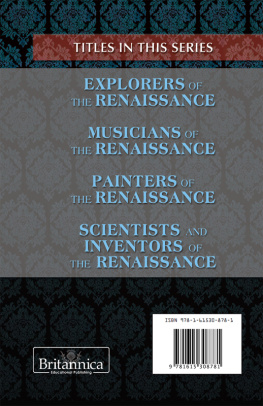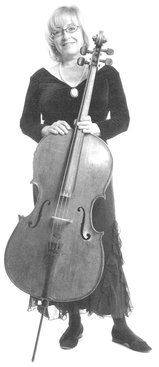Acknowledgments
NO BOOK IS EVER WRITTEN without the support of many individuals, and Id like to single out a few.
My editors, Sandra Hyslop and Gwendolyn Freed, have been virtual founts of wisdom and knowledge. Both brilliant writers, they have instilled in me the confidence to forge ahead with this project. Thanks must also go to Sandra for her tireless copy editing and assistance with research and ideas for this book.
This book would not have been written without the help of Sandi Brown of the Minnesota Orchestras public affairs department. She saved me from every injury in my book by painstakingly typing each word onto the computer. Thank you, Sandi!
Jennine Speier, M.D., has been my partner in Performing Arts Medicine for more than a decade. Her insightful reading of the book for its medical content and accuracy has been invaluable. Of course, no book would have been written without the founders of this field of medicine, especially Alice Brandfonbrener, M.D., and Richard Lederman, M.D., who have given me great inspiration and guidance over the past 20 years.
My husband, Howard Kleyman, has been unfailingly supportive, giving me the time I needed to sequester myself to write. His help with research has also been instrumental in bringing this book to fruition. Kathy Timmerman, book designer, brought the book to its present format. Let me thank also my son, Harris, for his technical expertise, his website design, and his work with recent revisions.
Several friends gave me valuable feedback. Thank you Clara Lindner, Nora Shulman, Felix Tyndel, M.D., Heather MacLaughlin, Joanna Falk, Diane Tremaine, Cara Mia Antonello, Glen Estrin, and Mina Fisher, and I am grateful to Val Needham and Michael Houstoun, the Keys Family and Wynn-Anne Rossi and many others who have shared their personal stories.
I am grateful to William Schrickel for his photography, Leyla Lopez for her caricatures depicting the stretches, to Randale Sechrest, M.D. and his organization Medical Multimedia Group (MMG) for the medical images used by permission, the Wenger Corporation, B&G France, Oleg Products and Midwest Musical Imports for photos of their products. Many of my colleagues posed for photos of stretches and willingly wear the splints or orthotics that they model. Thank you Chris Marshall, Vali Phillips, Pam Arnstein, Wendy Williams, Joanna Falk, Tony Ross, Kathy Kienzle, Marni Hougham, Robert Dorer, and Kristin Kemper.
I am particularly grateful to Julie Borden, artist extraordinaire, for allowing me to use the images of her String Shadows hand painted cello for the cover design.
I would like to thank the many medical practitioners for their guidance and expertise, especially Oleg Froymovich, M.D., Otolaryngology and Marshall Chasin M.Sc., Aud. I am also most grateful to Roy M. Carlisle, consultant, and to John Cerullo and the wonderful team at Hal Leonard for their belief in this book and their willingness to take it to wider audiences. Last but not least, I dedicate this book to all those who have been playing hurt, and to those who will play less hurt as a result of this book. I am gratified by the support of the many musicians and medical professionals who have appreciated my book through seven reprints and I am thrilled to release this revised 2010 edition.
The author would like to thank the following publishers and individuals for permission to use their material:
The Athletic Musician a guide to playing without pain by Barbara Paull and Christine Harrison, published by Scarecrow Press, copyright 1997 by Barbara Paull and Christine Harrison. Used by permission of Scarecrow Press.
The Cellist by Gregor Piatigorsky, published by Doubleday & Co., a division of Random House, Inc., copyright 1965. Used by permission of Doubleday Permissions Department.
Dangerous Decibels Curriculum and Hearing Chart used by permission.
Oregon Health and Science UniversityOregon Hearing Research Center
www.dangerousdecibels.org
Health Promotion in Schools of Music Project (HPSM) www.unt.edu/hpsm spearheaded by Kris S. Chesky, Ph.D.; William J. Dawson, M.D.; and Ralph Manchester, M.D.
Horn Technique by Gunther Schuller, 2nd Edition, published by Oxford University Press, copyright 1992. Used by permission of Oxford University Press. All rights reserved.
I Really Should Be Practicing by Gary Graffman, published by Doubleday & Co., a division of Random House, copyright 1965. Used by permission of Gary Graffman.
Midwest Musical Imports for permission to use photos of their products.
Randale Sechrest, M.D. Medical Multimedia Group (MMG). Medical images used by permission.
228 West Main Street, Suite D, Missoula, MT 59802-4345.
Repetitive Strain Injury, A Computer Users Guide by Emil Pascarelli, M.D., and Deborah
Quilter, published by John Wiley & Sons, Inc., copyright 1994 by Emil Pascarelli and
Deborah Quilter. Used by permission of John Wiley & Sons, Inc.
Unfinished Journey by Yehudi Menuhin, published by Alfred A. Knopf, Inc., copyright 1976 by Yehudi Menuhin and Patrick Scale and Associates. Used by permission of Alfred A. Knopf, Inc., a division of Random House, Inc.
Wenger Corporation for permission to use photos of their products.
About the Author
JANET HORVATH, associate principal cello of the Minnesota Orchestra (Minneapolis, MN) for more than two decades, is a soloist, chamber musician, writer and award winning advocate for injury prevention. A trail-blazer in speaking and writing openly about the physical stresses experienced by musicians, she has contributed importantly to the awareness of musicians work-related ailments and their prevention. She is in demand all over the nation for her seminars, Playing (Less) Hurt. Through her efforts, which have included precedent-setting presentations before professional symphony orchestras, Ms. Horvath has contributed significantly to improvements in working conditions for all orchestra musicians. The Injury Prevention Guide for Musicians, which benefits from her decades of lecturing, teaching, and research in the field of performing arts medicine, applies not only to symphony orchestra instrumentalists, but also to professional, amateur, and student musicians in all disciplines. Playing (Less) Hurt is a readable and essential reference.
In 1992, Ms. Horvath received the American String Teachers Association Service Award in recognition of her outstanding efforts on behalf of musicians health; in 2001 she was selected to deliver the Richard J. Lederman keynote lecture at the Performing Arts Medicine Associations nineteenth Annual Symposium on Medical Problems of Musicians and Dancers in Aspen. The 2009 edition of Playing (Less) Hurt: An Injury Prevention Guide four Musicians was awarded the gold medal in the Health/Medicine/Nutrition category from the Independent Publishers Book Awards 2009.
Ms. Horvath has presented at conferences, festivals, colleges and hospitals and to symphony orchestra management groups, to youth orchestras and to amateur chamber music associations all over the country while continuing her busy schedule as a professional musician and as a performer.
Music may achieve the highest of all missions:
she may be a bond between nations, races and states ,
who are strangers to one another in many ways;
she may unite what is disunited and bring
peace to what is hostile.


